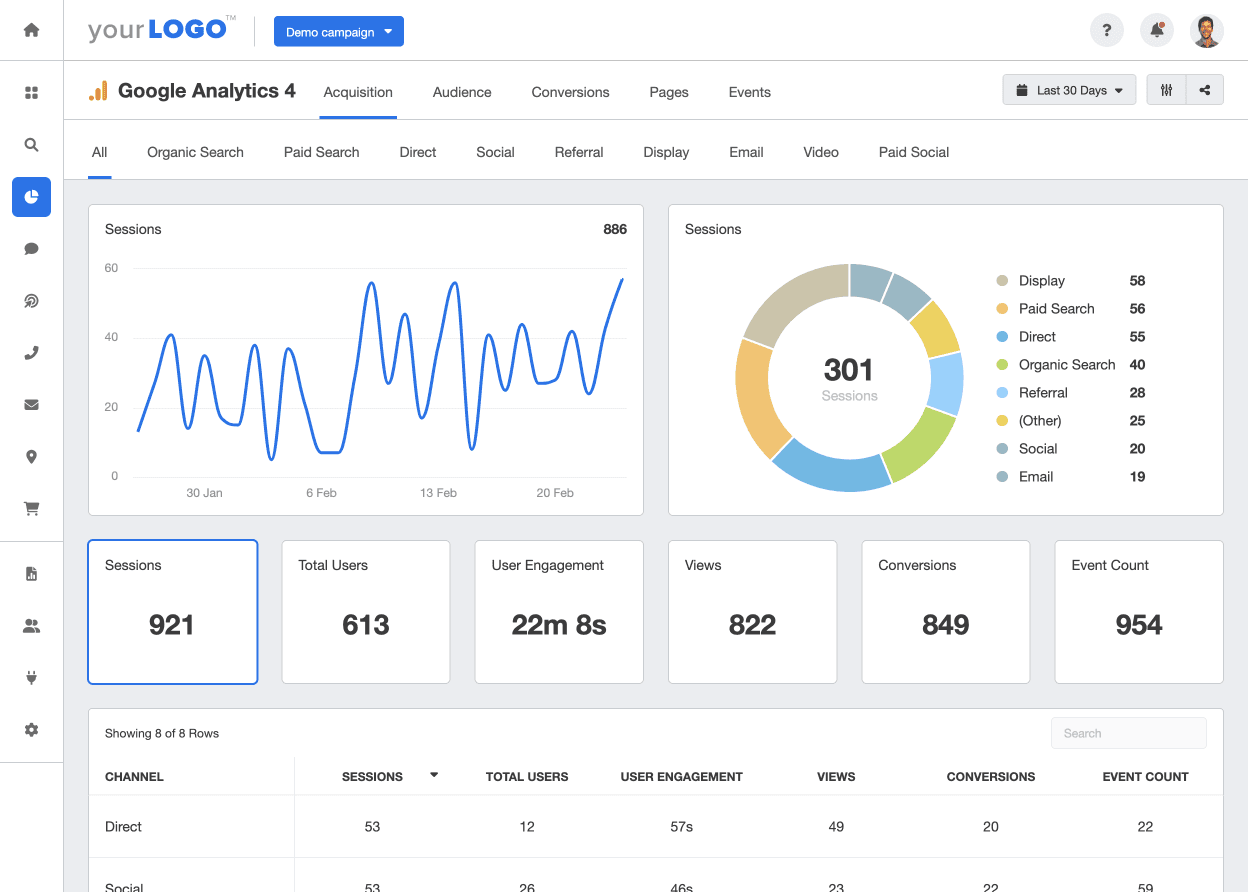Master Site Insights With Accurate Google Analytics Monitoring Code
The effective application of Google Analytics hinges on the exact execution of its tracking code, an essential action often ignored by website proprietors. What are the common risks that could undermine your monitoring initiatives, and just how can you make sure precision in your technique?
Understanding Google Analytics Essentials
Google Analytics is an essential device for website owners and marketing professionals, providing important understandings into customer habits and web site performance. At its core, Google Analytics accumulates information regarding site visitors to a website, allowing customers to analyze metrics such as web traffic sources, individual engagement, and conversion rates. Understanding these basics is essential for maximizing an internet site's effectiveness and enhancing customer experience.
The platform utilizes cookies to track communications, tape-recording information such as page views, session durations, and bounce prices. This information is aggregated and offered through personalized dashboards, allowing users to picture fads over time. Trick efficiency signs (KPIs) can be kept an eye on, such as the complete variety of individuals, brand-new versus returning site visitors, and the geographical circulation of the target market.
Furthermore, Google Analytics supplies division attributes, allowing users to separate details website traffic resources or user demographics for more targeted evaluation. By mastering these fundamental aspects, website owners can make informed choices regarding content strategy, advertising campaigns, and overall website enhancements. Eventually, recognizing Google Analytics basics is important for leveraging information to drive development and attain business goals effectively.
Establishing Your Monitoring Code

Copy the provided monitoring code and paste it right into the HTML of your website. Preferably, this code needs to be placed in the header section of every web page you wish to track. This makes certain that the monitoring code lots prior to any other material, enabling it to record data accurately. There are plugins available that streamline the assimilation process. if you are using a content administration system (CMS) like WordPress.
After installment, validate that the tracking code is working correctly by using Google Tag Assistant or the Real-Time records in Google Analytics - when does the google analytics tracking code send an event hit to analytics?. This action is important to confirm that your information collection is exact and active, establishing the foundation for informative evaluation
Typical Tracking Code Issues
This may happen when the monitoring code is positioned in the incorrect section of the website's HTML, commonly leading to incomplete or missing data. In addition, having several circumstances of the tracking code on a single page can result in filled with air metrics, as Full Report customer interactions may be counted extra than when.
An additional concern occurs from the use of ad blockers, which can avoid the tracking code from executing completely, hence skewing information. when does the google analytics tracking code send an event hit to analytics?. Furthermore, failure to configure filters appropriately can bring about the exclusion of crucial website traffic sources or the inclusion of unwanted reference spam, misshaping the data gathered
Site proprietors may also neglect the significance of tracking code updates, specifically when moving to Google Analytics 4 (GA4) from Universal Analytics. Finally, not enough testing before launching modifications can result in undiscovered errors in the tracking code, even more complicating information reliability. Resolving these common problems is essential for making certain accurate monitoring and insightful analytics.
Studying Web Site Data Efficiently
Precise information collection is only the primary step in leveraging Google Analytics; the real value depends on effectively assessing that information to drive find educated decision-making. To accomplish this, it is vital to recognize vital efficiency signs (KPIs) that align with your business objectives. Emphasis on metrics such as conversion rates, customer involvement, and website traffic sources, as these will certainly supply insights right into user habits and the overall efficiency of your internet site.
Making Use Of Google Analytics' segmentation features enables for a much deeper understanding of your target market. By breaking down information right into details demographics, behaviors, and web traffic channels, you can uncover fads and patterns that inform targeted methods. Applying custom-made reports and dashboards can streamline this procedure, making it possible for fast accessibility to pertinent data.
In addition, consistently examining data patterns over time assists to identify abnormalities and possibilities for improvement. Utilize visualization tools to existing data in a quickly absorbable style, promoting more effective communication with stakeholders. Inevitably, the ability to evaluate site information effectively equips organizations to make tactical decisions that boost individual experience, optimize marketing initiatives, and drive development.

Best Practices for Accurate Tracking
Applying efficient tracking practices is critical for acquiring reputable data in Google Analytics. To guarantee precise monitoring, begin by appropriately setting up the Google Analytics tracking code on every page of your site. This can be completed through a tag manager or by directly installing the code right into the HTML.
Next, configure your Google Analytics account to exclude internal web traffic. This can see this website be done by establishing filters that identify and eliminate sees from your company's IP address, therefore stopping skewed data. In addition, make use of occasion monitoring to keep an eye on certain customer communications, such as downloads or video plays, which conventional web page sights may neglect.
On a regular basis investigate your tracking setup to confirm that all features, such as objectives and ecommerce monitoring, are functioning correctly. Establish a regular identifying convention for your occasions and campaigns to promote less complicated reporting and analysis.
Finally, consider leveraging UTM parameters for projects to gain understandings into the efficiency of different advertising efforts. By complying with these best methods, you can enhance the precision of your data collection and analysis, ultimately resulting in more informed decision-making for your web site.
Conclusion
By making certain the tracking code is correctly positioned and frequently audited, internet site proprietors can record vital individual interaction information, therefore facilitating the identification of vital efficiency indicators. Ultimately, a durable monitoring framework boosts the capability to drive interaction and boost overall internet site efficiency.

Not enough testing before introducing adjustments can result in undetected mistakes in the monitoring code, further complicating information integrity.Carrying out effective monitoring practices is essential for getting trusted data in Google Analytics. By guaranteeing the monitoring code is correctly positioned and regularly audited, internet site proprietors can record vital user communication information, therefore helping with the identification of crucial performance indicators.